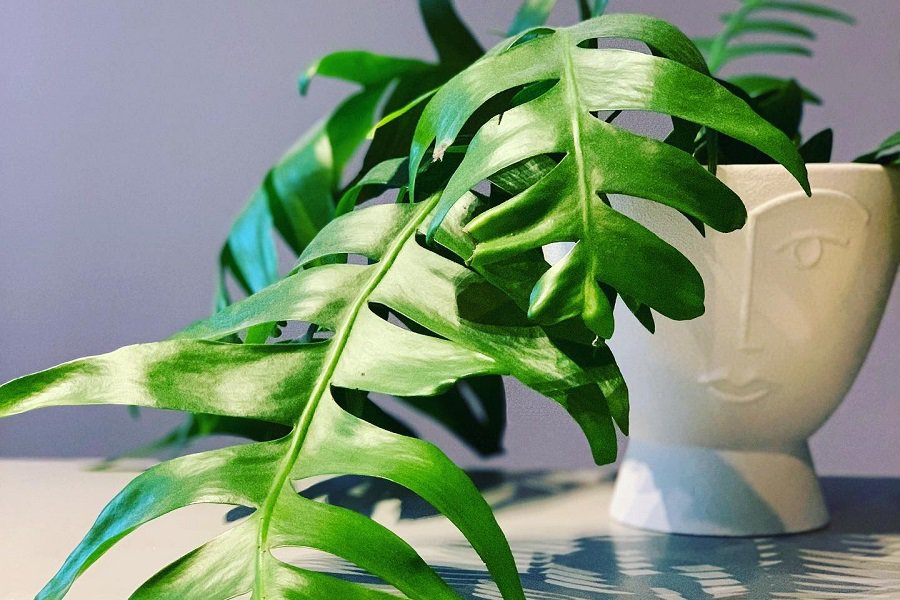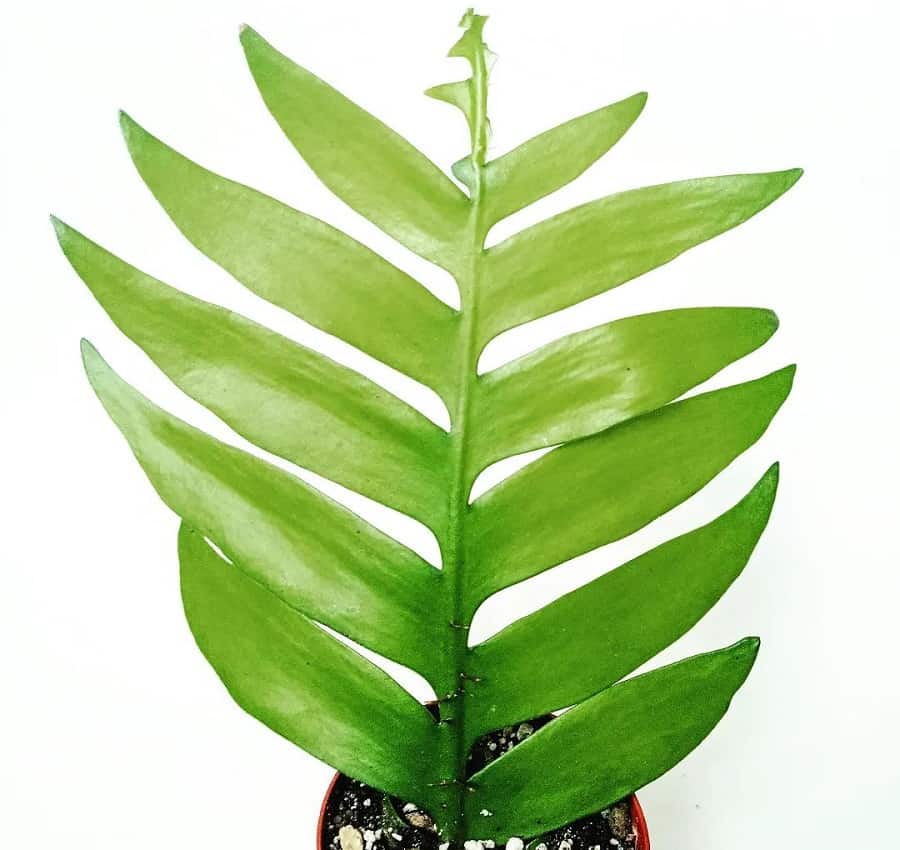Selenicereus chrysocardium: Characteristics and Care
This unique cactus comes from Mexico and goes by another name – Epiphyllum chrysocardium. Instead of growing upright, its delicate stems spread out over a large area. It’s an epiphyte, meaning it grows on other plants and absorbs moisture from the air.
The Fernleaf Cactus has a flat stem that hangs or drapes on another plant. Its leaves are long, narrow, and green. Although rare, it can produce big, white flowers – a true sight to behold!

Related Post:
31 Types of Selenicereus With Pictures
Contents
Epiphyllum Chrysocardium Care
Maintaining the right balance of water, light, and nutrients is key. You only need to water it once a week, especially in humid or mild climates.
If kept indoors, place it near a window where it can get bright, indirect sunlight. This light is crucial for photosynthesis, which provides the plant with food and energy.
Since this cactus doesn’t need much water, be careful with strong commercial fertilizers. You won’t be able to dilute them, risking fertilizer burn.
Overall, ensure a balanced environment with ample natural light, fresh air, and just the right amount of water. The Fernleaf Cactus is low-maintenance as long as you get the basics right.
Fern Leaf Cactus Propagation
The best way to propagate this cactus is through stem cuttings from a healthy parent plant. You can take multiple cuttings if desired.
Plant the cuttings in a shallow pot with drainage holes, using a special cactus soil mix (regular soil won’t drain properly).
Water the soil until it’s damp, but not wet. Then, let the cuttings take root and grow. Avoid overwatering – like other cacti and succulents, the Fernleaf Cactus only needs water once a week. Also, ensure it gets the right amount of light, avoiding intense afternoon heat that could scorch the leaves.

Frequently Asked Questions
Does Selenicereus chrysocardium like humidity?
Yes, these “rainforest cacti” thrive in a certain level of humidity, unlike desert plants. The soil should be damp and well-draining, without allowing water to accumulate at the bottom.
Does Selenicereus chrysocardium like the sun?
Cacti generally prefer morning sun over the intense afternoon heat. This cactus needs lots of natural light, but it’s best filtered to avoid scorching the leaves or excessive dehydration. Find a spot with partial shade but plenty of sun before noon.

How long does it take for Selenicereus chrysocardium to bloom?
If propagated from a cutting, it can take up to 3 years before blooming. The cutting needs time to sprout branches and develop into a new plant. Once established, it will likely bloom annually in springtime, with flowers lasting until early summer.
